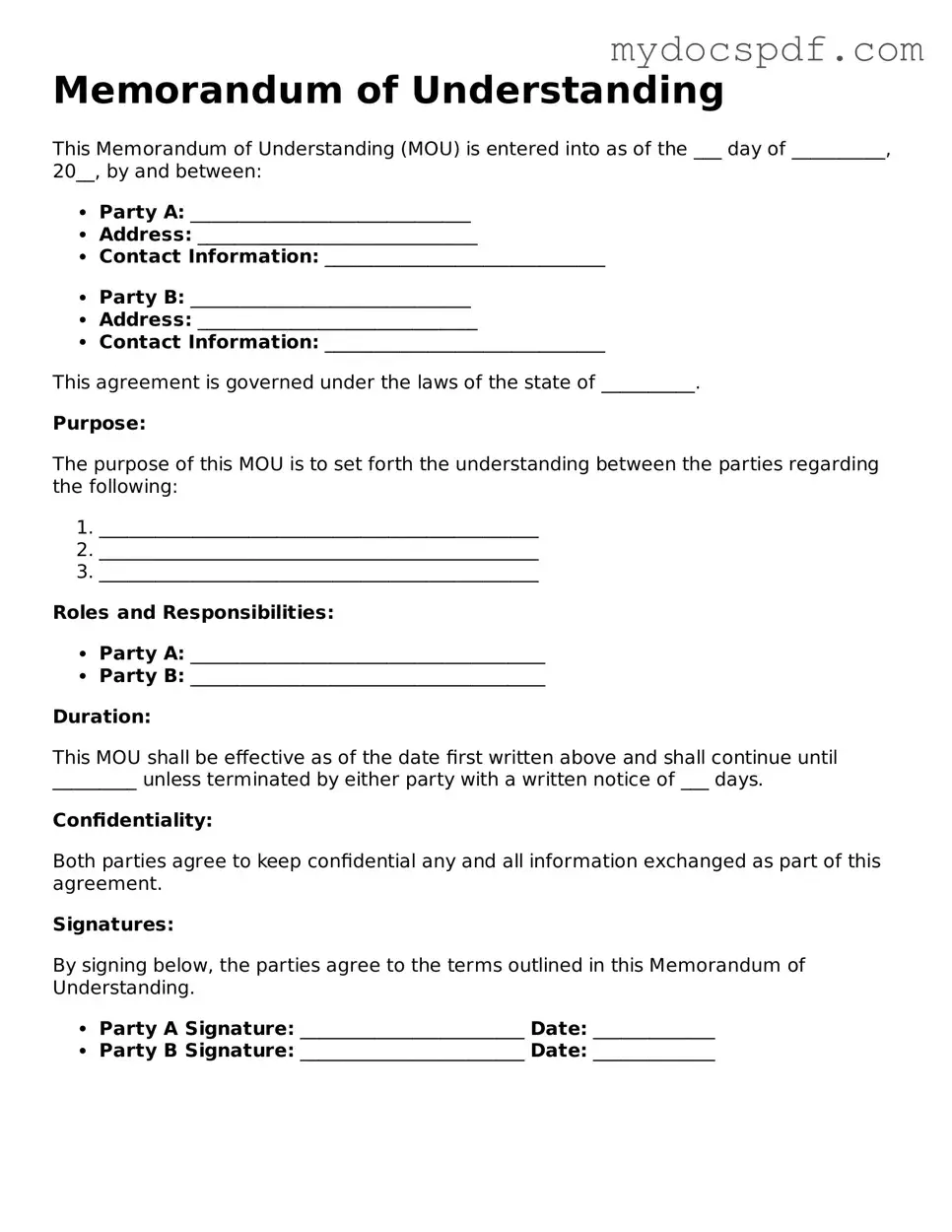Memorandum of Understanding
This Memorandum of Understanding (MOU) is entered into as of the ___ day of __________, 20__, by and between:
- Party A: ______________________________
- Address: ______________________________
- Contact Information: ______________________________
- Party B: ______________________________
- Address: ______________________________
- Contact Information: ______________________________
This agreement is governed under the laws of the state of __________.
Purpose:
The purpose of this MOU is to set forth the understanding between the parties regarding the following:
- _______________________________________________
- _______________________________________________
- _______________________________________________
Roles and Responsibilities:
- Party A: ______________________________________
- Party B: ______________________________________
Duration:
This MOU shall be effective as of the date first written above and shall continue until _________ unless terminated by either party with a written notice of ___ days.
Confidentiality:
Both parties agree to keep confidential any and all information exchanged as part of this agreement.
Signatures:
By signing below, the parties agree to the terms outlined in this Memorandum of Understanding.
- Party A Signature: ________________________ Date: _____________
- Party B Signature: ________________________ Date: _____________
